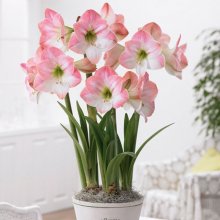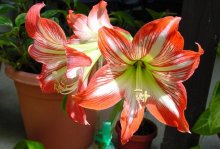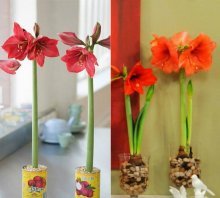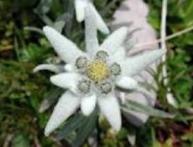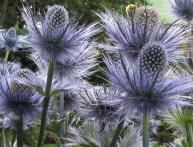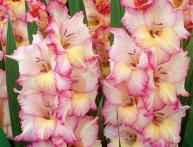Why amaryllis does not bloom at home, how to provoke flowering
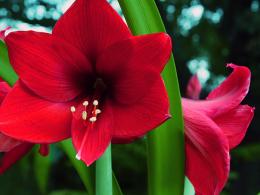
Amaryllis is one of the most favorite plants of gardeners. It is distinguished by the variety of colors, the grace of the abundance of inflorescences composed of bells, which looks impressive and bright.
Content:
- Description of amaryllis, where it comes from, what species it belongs to
- Basic principles of plant care
- For what reasons may there be no flowering?
- How to provoke amaryllis to bloom at home
Description of amaryllis, where it comes from, what species it belongs to
Amaryllis - a plant common among gardeners. In order for it to please the owner with regular flowering, it is worth following a number of rules.
The name of the flower comes from the name of the shepherdess Amaryllis, a character in an ancient poem. Translated as “sparkling.”
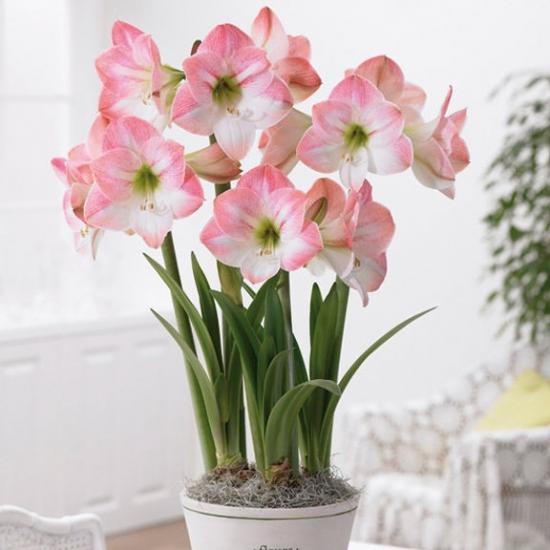
Amaryllis came to Europe from South Africa. Initially, this plant was classified as a lily, and only in the eighteenth century did Carl Linnaeus classify the flower as a separate species.
Amaryllis belongs to bulbous breeds, it is distinguished by a high bare peduncle and narrow, smooth dark green leaves, which are arranged in several, usually two, rows. The inflorescences consist of three to ten bells, each of which is represented by six petals with sharp tips.
The first amaryllis were white, sometimes with a slight red-pink tint.But years of hard work by breeders have significantly expanded the color range of flowers: from bright red, yellow and orange to an absolutely fantastic combination of several colors in one plant.
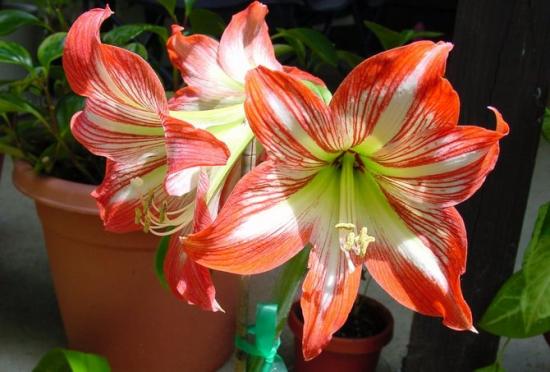
However, it is important to remember that this plant is not only beautiful, but also dangerous. The bulbs of the plant contain a dangerous alkaloid - lycorine. This substance can cause poisoning, which is why you only need to wear gloves when planting amaryllis. In addition, the flower should be kept as far as possible from children and pets.
Basic principles of plant care
Why doesn't bloom amaryllis at home, the forum of many floriculture sites is replete with this question. The main precondition for flowering and growth of a plant is proper care for it. Its main rules include the following.
Regulating the correct temperature and lighting
Amaryllis grows well in bright, but not direct light. It is better to place the pot on a west-south or south-east window.
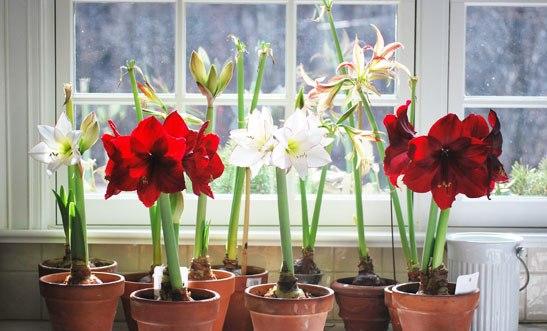
It is necessary to monitor the position of the plant's arrow. Thus, amaryllis constantly reaches towards the sun during its growth, which must be taken into account. In order for the flower to grow evenly, the pot must be constantly rotated and be sure to build a support for the flower’s shoot.
It is important that the flower does not stand in drafty areas, as this can lead to its death. It tolerates both too high and too low, sub-zero temperatures equally poorly.
Compliance with watering rules
In general, the cost of watering a flower is one in three: we water it a day, three days we don’t. Water Amaryllis needs this only around the bulb until the first shoots, leaves or flower arrows appear, depending on the type of plant.
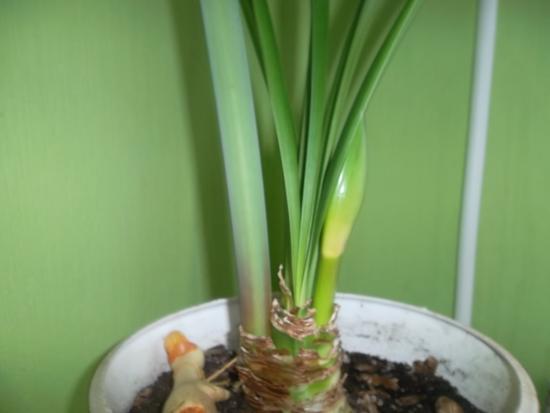
At the stage of rapid growth, watering should be a little more frequent, but under no circumstances should you overwater the flower. Excess moisture can cause the bulb to rot. Water the flower with water at room temperature.
It is also recommended to spray the plant with water and wipe the leaves from dust. It is recommended to occasionally spray the plant with slightly warmed water. It is important to remember that wiping and spraying the flowers themselves is strictly prohibited.
In addition, bulbs that are at the resting stage do not need to be filled with water.
It is also important to remember that the most suitable time for the bulbs to rest is the summer period, right up to the first autumn frosts. The best time for forcing is traditionally considered to be the last weeks of April or the first days of March.
If these conditions are met, the question is: why? doesn't bloom amaryllis at home will no longer bother gardeners.
For what reasons may there be no flowering?
However, even if the conditions are met, the plant may not bloom. The question naturally arises: why does amaryllis care at home not bloom?
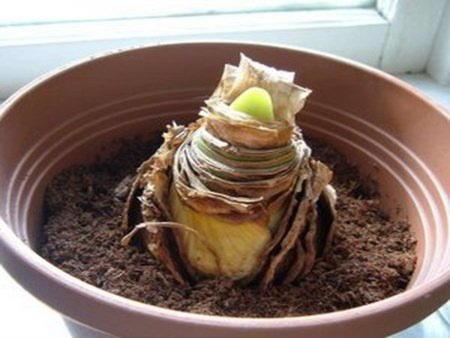
The answer may lie in one of the following problems:
- Onion did not have time to rest after the last flowering period;
- Room temperature is too low or too high;
- The soil is not fertile enough;
- The pot in which the flower is planted is too large for the bulb;
- Onion mechanically damaged or spoiled by pests;
- The plant lacks light;
- The bulb was planted too deep;
- The bulb is too young.
In addition to the lack of flowering, a loss of color or, on the contrary, darkening is often observed.A possible reason for this is too much sun, lack of heat or high humidity.
How to provoke amaryllis to bloom at home
In order for the plant to throw out a flower arrow, it is recommended:
- Before the estimated time flowering provide regular watering and complex fertilizers for amaryllis
- After the amaryllis has finished flowering, it is recommended to replant it in new soil and, if necessary, plant out the “babies”
- After the leaves have grown sufficiently, watering should be reduced.
The bulbs should rest at a temperature not exceeding ten degrees.
By following these rules, the problem with the flowering of the plant will be completely eliminated.
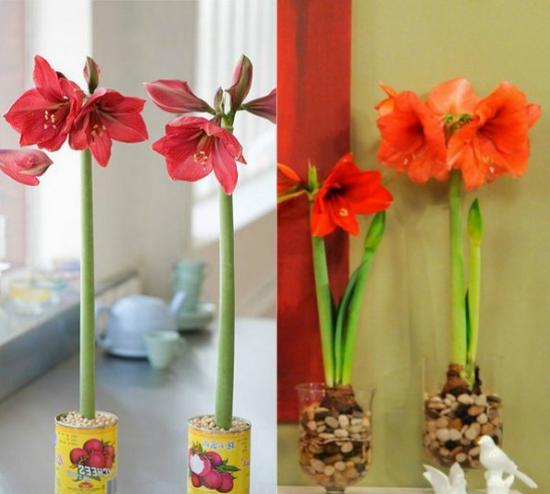
Amaryllis is a bulbous plant that blooms only after a dormant period (summer and part of autumn). If you strictly follow the recommendations for caring for the plant, it will delight the owner with systematic flowering.
For more information about amaryllis flowering, watch the video:

